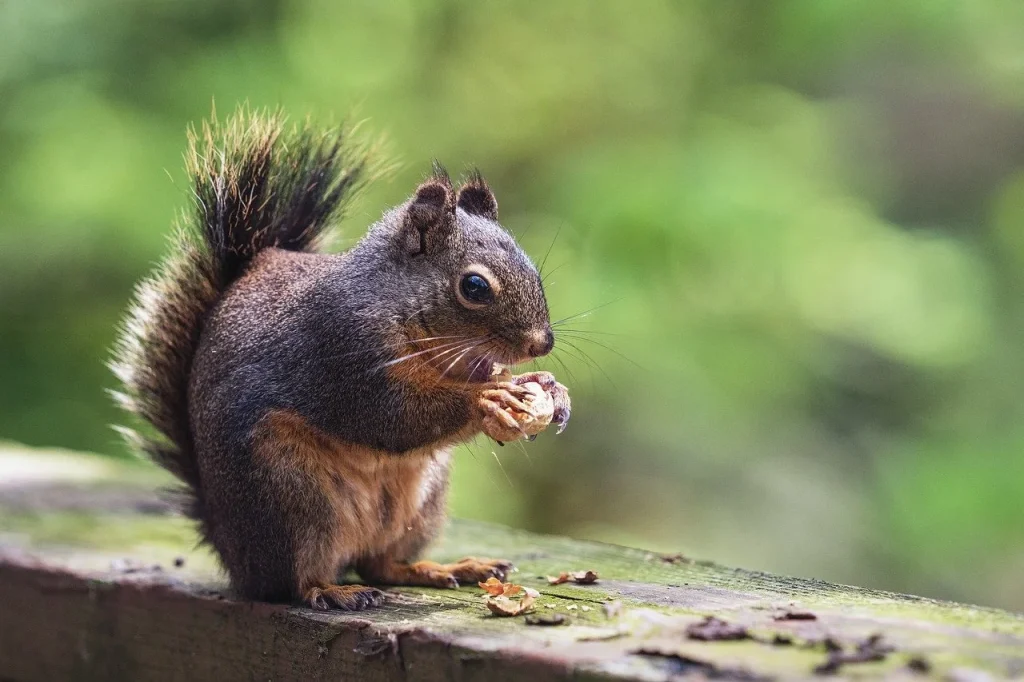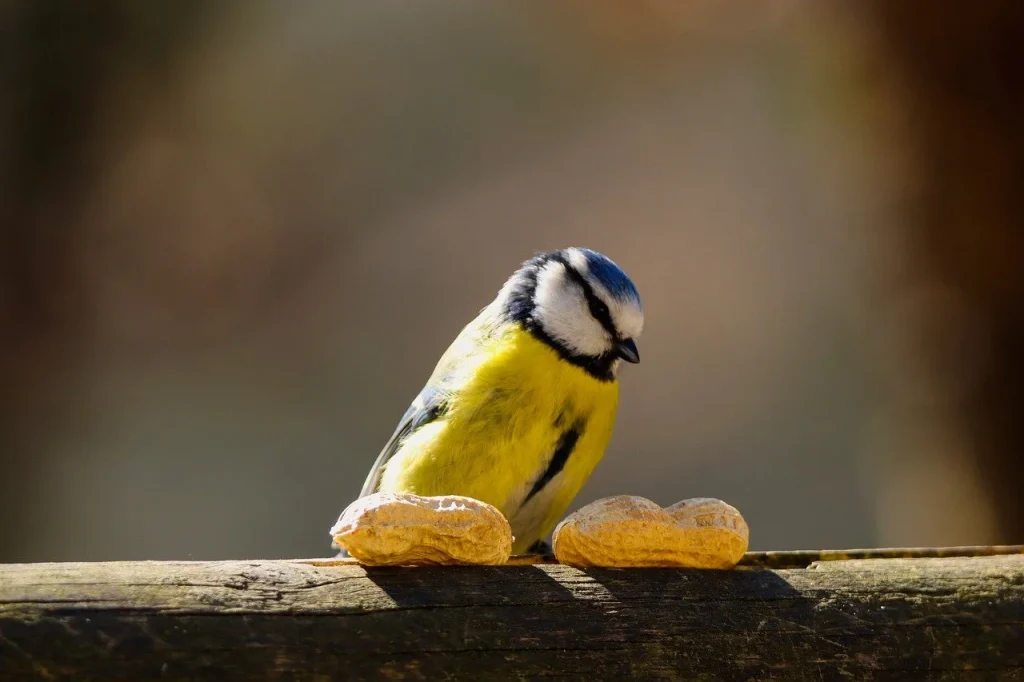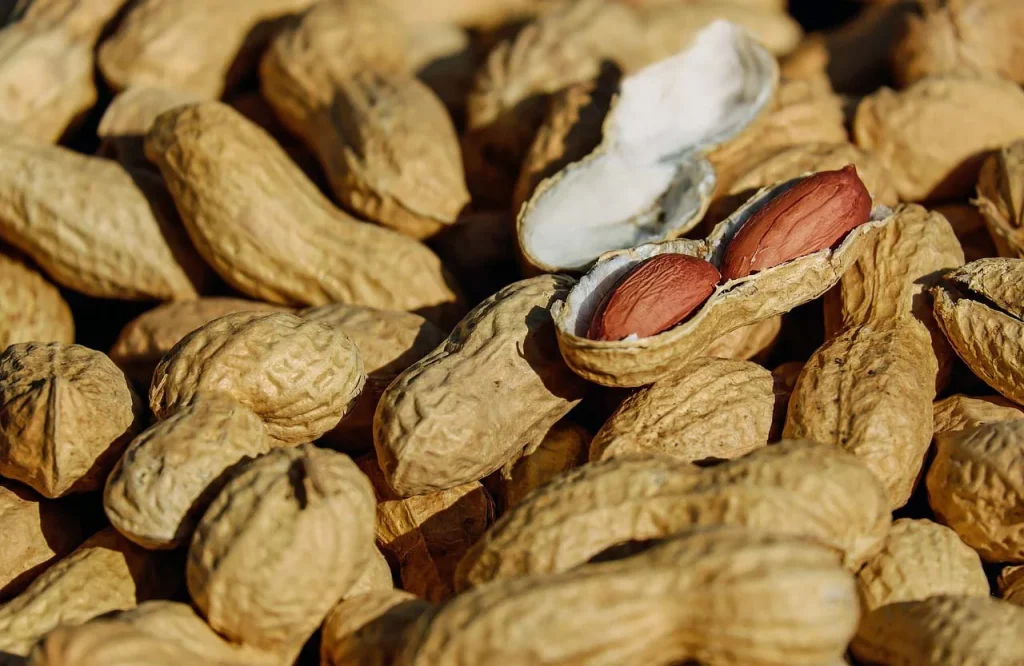Peanuts aren’t just for elephants and circus snacks; they’re a fascinating topic all on their own! Did you know that, despite their name, peanuts are actually legumes and not nuts? That’s right, they’re more like beans than almonds.
In this article, we’re diving into 50 fun facts about peanuts that will surprise you, make you smile, and perhaps even make you crave a peanut butter sandwich. Who knew that something so small could be so interesting? Are you ready to become a peanut pro?
I had a little peanut; I put it on the track. The train was coming fast, but my peanut came right back.
Charles M. Schulz
Peanuts Facts
As you dive into the world of peanuts, keep in mind that every detail counts! Make sure to read thoroughly, because a quiz at the end of this article will test your expertise on this crunchy subject.
- The “goober” plant was one of the first cultivated crops by prehistoric South American cultures.
- These legumes are unique because they flower above ground yet fruit below ground.
- America’s beloved P.B. & J sandwich might owe its existence to the Civil War, where soldiers popularized the spread.
- Despite their name, they are not true nuts but legumes, related to beans and lentils.
- Dr. George Washington Carver developed over 300 products from them, including cosmetics and medicines.
- The plant can enrich the soil by fixing nitrogen, reducing the need for chemical fertilizers.
- One acre of the crop can produce enough of the product for 30,000 peanut butter sandwiches.
- The average American consumes more than six pounds annually.
- They are a crucial crop in the U.S., with Georgia leading in production, harvesting about half of the U.S. crop.
- Astronaut Alan Shepard brought a peanut with him to the moon, making it an interstellar traveler.
- They contain resveratrol, an antioxidant also found in grapes and red wine, believed to improve heart health.
- The first peanut crop genome was sequenced in 2014, offering possibilities for breeding disease-resistant varieties.
- They are used as an ingredient in dynamite in the form of peanut oil-derived glycerol.

- March is National Peanut Month in the U.S., celebrating this versatile crop.
- The flowers of the plant are sensitive to light and will adjust their opening and closing to the sun’s movement.
- They play a crucial role in crop rotation, improving subsequent cotton yields when planted alternatively.
- Elephants in circuses are often fed peanuts, although in the wild, peanuts are not a part of their diet.
- They have a specific self-pollination process that occurs underground, making them an interesting study for botanists.
- Charles Schulz’s “Peanuts” comic strip was initially titled “Li’l Folks”—a nod to the small stature of its characters, not the legume.
- January 24th is National Peanut Butter Day in the U.S., a day for enthusiasts to celebrate.
- Peanut oil is considered a premium cooking oil due to its high smoke point and neutral flavor.
- India and China are the largest global producers, significantly influencing global supply and pricing.
- They contain more protein than any other nut, making them a valuable food source in vegetarian and vegan diets.
- The fear of peanuts, known as arachibutyrophobia, includes the fear of peanut butter sticking to the roof of the mouth.
- The world record for the most peanut butter sandwiches eaten in an hour is 46.
- Exposure to them in the first year of life may help reduce the risk of developing allergies to them.
- They are sometimes used in the production of biodegradable plastics and other environmentally friendly materials.
- Roasting enhances their flavor and also increases their antioxidant content.

- Peanut festivals are held annually in several U.S. states, celebrating the harvest with parades and peanut-themed activities.
- The fat content in them is primarily heart-healthy monounsaturated and polyunsaturated fats.
- Their shells are not waste; they’re used in everything from kitty litter to fire logs.
- They were a vital nutritional supplement in the first successful treatment of pellagra, a disease caused by niacin deficiency.
- The creator of one of the most popular brands of peanut butter sold his patent for $1 to an army officer.
- The boiling process can double their antioxidant content compared to raw or roasted forms.
- They have been grown in space aboard the International Space Station, offering insights into plant growth in microgravity.
- The ancient Incas used them as sacrificial offerings and buried them with mummies to aid in the afterlife.
- The term “peanut gallery” originally referred to the cheapest and rowdiest seats in a theater, often throwing them at performers.
- The first electronic peanut vending machine was introduced at the 1904 World’s Fair in St. Louis.

- They are instrumental in making plumpy’nut, a therapeutic food used to fight malnutrition in famine-stricken regions.
- The largest ever recorded was grown in North Carolina, measuring over four inches long.
- They can produce a flower that never emerges from the soil, making it a fascinating subject for botanical studies.
- During World War II, they were a critical component of Allied soldiers’ rations due to their nutritional value and shelf life.
- Their growth cycle from planting to harvesting spans about four to five months.
- Peanut agglutinin, a protein found in them, is studied for its potential to inhibit cancer cells.
- A diet containing them can support beneficial gut flora, improving digestive health.
- They play a starring role in famous dishes around the world, including West African peanut soup and Indonesian satay.
- Their high niacin content can improve memory and help reduce cognitive decline in the elderly.
- They can be transformed into a powder that delivers high protein content with a reduced risk of allergies.
- Jimmy Carter, the 39th President of the U.S., was a peanut farmer before entering politics.
- In some African cultures, they are a symbol of fertility and are often used in wedding rituals.
Peanuts Myths

Now that you’re more familiar, let’s dive into some common myths. We’ll separate the truth from the fiction.
- Peanuts are tree nuts.
They are often mistaken for tree nuts, but in reality, they are legumes. This classification is shared with peas and beans, as peanuts grow underground and not on trees. - Peanuts are one of the least nutritious snacks.
Contrary to common belief, they are packed with nutrients. They are a good source of protein, essential fats, and various vitamins and minerals, making them a healthy snack option. - Eating peanuts can cause acne.
It is often claimed that they worsen acne, but no direct link has been conclusively proven. Acne is generally influenced by a combination of genetic, hormonal, and environmental factors. - Peanut allergies are rare.
This belief is misleading. Peanut allergies are actually one of the most common food allergies and can be severe. It is always recommended that caution be exercised, especially in communal eating settings. - Roasted peanuts are just as healthy as raw peanuts.
Although roasted peanuts are delicious, some believe that the roasting process reduces their nutritional content. However, both raw and roasted peanuts maintain many beneficial nutrients, although slight differences might be noted.
No products found.
Peanuts Quotes

Let’s jump into the world of peanuts through the insightful words of those who have celebrated them, from inventors to gourmands.
Life’s like a peanut butter sandwich; no matter which way you turn it, the peanut butter always sticks to the roof of your mouth.
Lisa Loeb
Singer-songwriter Lisa Loeb uses this metaphor to suggest that life, much like a peanut butter sandwich, often presents persistent challenges.
A peanut is neither a pea nor a nut.
Anonymous
This often-quoted anonymous line humorously points out the misleading nature of the word “peanut,” which is actually a legume, not a nut.
When you have faith, everything is a possibility, like how a peanut can grow into a giant tree.
Nick Vujicic
Motivational speaker Nick Vujicic uses the growth of a peanut into a tree as a metaphor for the boundless possibilities that faith can bring to one’s life.
Each peanut that you eat brings you closer to your last, cherish them.
Unknown
This reflective and slightly humorous quote, attributed to an unknown author, reminds us to appreciate the small, often overlooked moments in life, like enjoying peanuts.
To me, peanuts are not just food; they are a pathway to my childhood memories.
David Chang
Celebrated chef David Chang shares a personal reflection, linking peanuts not just to nourishment but also to nostalgic recollections from his childhood.
Peanuts FAQ

We’re approaching the FAQ section. Read carefully—this final section will prepare you for the upcoming quiz.
- Will peanuts make you fat?
Not necessarily! They are high in calories because they’re rich in healthy fats, protein, and fiber, which can actually help you feel full and satisfied. Just be mindful of portion sizes, especially if you’re watching your calorie intake. - Are peanuts good for you?
Absolutely! They are nutritious, offering a good dose of protein, healthy fats, and essential vitamins and minerals. They can be part of a balanced diet and may even help reduce the risk of heart disease when consumed in moderation. - Can peanuts go bad?
Yes, they can go bad. They contain oils that can become rancid over time, especially if stored improperly. Keep them in a cool, dry place, and if they taste bitter or off, it’s best to toss them. - Will peanuts raise blood sugar?
They have a low glycemic index, which means they have a minimal impact on blood sugar levels. This makes them a good snack option for people managing diabetes or anyone looking to maintain stable blood sugar levels. - Are peanuts bad for dogs?
Peanuts themselves aren’t toxic to dogs, but they should be given in moderation. Avoid salted or flavored peanuts, and never give dogs peanut products that contain xylitol, a sweetener that is toxic to dogs. Always check with your vet if you’re unsure about feeding your dog new foods.
No products found.
Peanuts Trivia

Welcome to the Ultimate Peanut Quiz! Brace yourself, because if you don’t crack any of these nutty questions right, you might just turn into a peanut yourself!
Peanuts Merch
If you are a true peanut fan, then you definitely need to check out our merchandise. You can find T-shirts, hoodies, mugs, and tote bags for your favorite designs. Feel free to check out all the other designs in our shop.
Conclusion
We’ve cracked the shell on the incredible impact of peanuts, uncovering their nutritional benefits and vast influence across various industries. The journey from a simple groundnut to becoming the heart of many culinary delights worldwide is truly remarkable.
As we close this exploration, take a moment to appreciate the mighty peanut not just for its flavor but for its role in food security and cultural traditions. Next time you enjoy a peanut, think of its global footprint and historical depth. Till next time, stay curious and explore more. Cheers.
2 Sources Used For This ArticlePeanuts 101: Nutrition Facts and Health Benefits – Healthline


